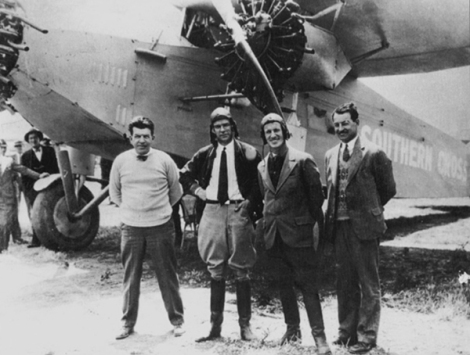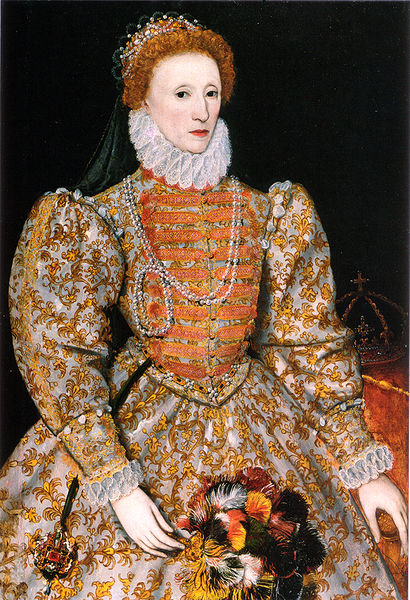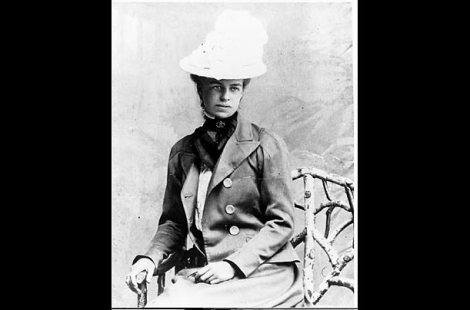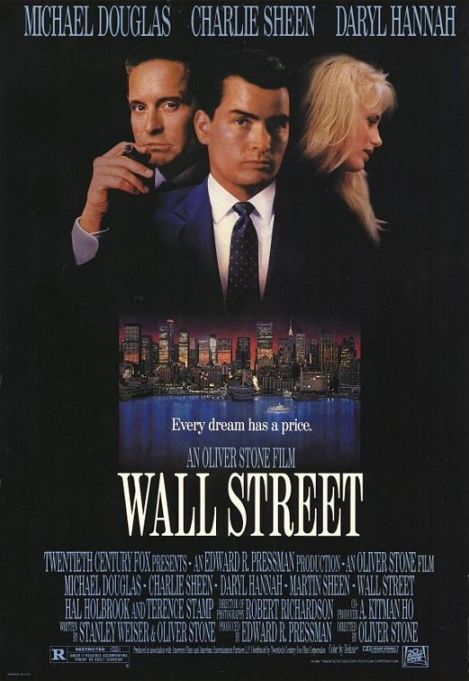



When did we all start painting our lips? Much before the common era, Cleopatra was known to grind carmine beetles and ants to get a rouge color for her lips. Women in the ancient Indus Valley Civilization applied lipstick to their lips for face decoration. Ancient Egyptians extracted purplish-red dye from fucus-algin, 0.01% iodine, and some bromine mannite, which resulted in serious illness. Anthropologists suggest the lips remind us of another pair of so called lips below the belt because they flush red and swell when they’re aroused which is why, if this theory is correct, red lipstick still remains the most popular color.
In Medieval Europe, lipstick was banned many times by the church and was thought to be used as an ‘incarnation of satan’, cosmetics being ‘reserved’ for prostitutes and whores. This is a funny concept or thought, “Sorry miss, this lipstick is reserved for that prostitute over there. No you cannot have it.” Lipstick started to gain popularity in England the 16th century, during the reign of Queen Elizabeth I, who made piercing red lips and bright white faces a fashion statement. By that time, lipstick was made from a blend of beeswax and red stains from plants. It was only to be banned again by queen Victoria calling it immoral. In 1770, the British Parliament passed a law condemning lipstick, stating that “women found guilty of seducing men into matrimony by a cosmetic means could be tried for witchcraft.”
In America in the 1930’s-40’s women were proud to “put their face on.” To support the troops and look a little more like their favorite movie stars. Since then, lipstick has proved to be a standby for many, many women. And men…
I found this fascinating video setting images to Michael jackson’s song, History. It’s long but I found it fascinating.

I always knew Eleanor Roosevelt had a hand in the policy in FDR’s three term presidency, but I had no idea how progressive she was on civil rights and human rights. Even after FDR’s death, she was a part of the first UN and wrote a column up to six weeks before her death in 1962.
A recent Time Magazine article writes, “Forget First Lady; Eleanor Roosevelt was one of the master politicians of the 20th century, period. F.D.R.’s legacy cannot be understood apart from hers. While some First Ladies are remembered for redecorating the White House, Eleanor was the first to hold press conferences (more than 300 of them), to visit — alone — U.S. soldiers at war overseas and to shrewdly maneuver her agenda through the back corridors of the White House for 12 years, chipping away at segregation, poverty and injustice. She may be the only First Lady ever to have had a Ku Klux Klan bounty on her head.
How did she do it? Modern First Ladies would recognize almost nothing about Eleanor’s life. She declined Secret Service protection and carried her own gun (and permit) when necessary. She kept an apartment in New York City’s Greenwich Village — in a house owned by a lesbian couple with whom she was good friends — and spent much of her time there when her husband was President.”
Excerpt is from Time Magazine’s The Relentless Mrs. Roosevelt. It’s worth the read!

So lets start at the semi-beginning. I wrote down somewhere that I want to “inspire people” for a living. Great. That limits my options. And then, one day I thought intensely about my lack of inspiration and started to long for the days of my academic past and the high school history teacher I still remember so well (and had a dream about recently, no details for you all on that one!) And somehow the idea of teaching started to sound brilliant. And somehow, history was the only option. After all, it couldn’t be that different than Art History right? (Ha!) So after I made the decision, I started looking for programs and realized w/o history credit in college I will have to take the state social studies exam that covers everything that has happened in the world at large from before time to the present and US Government, and Econ. That’s all? Oh, and some psychology and sociology for good measure. But, once I pass the exam this January, I will find my way to a program and be in the classroom by next August.
I have 5 areas or “domains” that the TeXes exam covers. These are broken down into competencies, of which there are 23. I have 30 weeks until the test. What’s the best way to tackle them? If I do one week per competency, if that’s even possible, I would finish 7 weeks early. If I do one domain per 5 weeks, I just get in by the deadline. Should I study 1 comp per week and then pick up the pieces and test myself after I finish them all? I’ve pasted the domains and competencies below. Tell me what you think.
Domain Competency
I World History 001 Ancient World Civ.
I World History 002 World 476 AD-1350
I World History 003 World 1350-1815
I World History 004 World 1815-Present
II US History 005 Exploration/Colonization
II US History 006 Revolutionary Era
II US History 007 Expansion/Civil War
II US History 008 US as World Power
II US History 009 Pol/Eco/Soc 1877-Present
III Geography/Culture/Soc Sci 010 Physical Geography
III Geography/Culture/Soc Sci 011 Cultural and Human Geo
III Geography/Culture/Soc Sci 012 Humans and environment
III Geography/Culture/Soc Sci 013 Soc/Anth/Psych
IV Government and Citizens 014 Democratic Govt
IV Government and Citizens 015 Citizenship and Pol. Process
IV Government and Citizens 016 Types of Pol. Systems
V Econ and Sci/Tech/Society 017 Econ Systems/Concepts
V Econ and Sci/Tech/Society 018 Free Enterprise System
V Econ and Sci/Tech/Society 019 Sci/Tech/Soci
VI Soc St Foundations/Skills 020 Soc St Foundations/Skills
VI Soc St Foundations/Skills 021 Sources of Soc Info
VI Soc St Foundations/Skills 022 Soc St. Research
VI Soc St Foundations/Skills 023 Soc Instruction/Assessment
An ode to billie on the anniversary of her death. Strange Fruit is said to be the first anti-racism song to hit mainstream culture.
Vodpod videos no longer available.

I was under the impression that coffee had been a way of life since at least the greeks, but it is a very recent discovery! (Well, recent as far as history goes)
The act of roasting and brewing coffee is traced back to Arabia in the 15th century CE. Stories date coffee to as early as the 6th century CE, but there is no evidence of its existence until the 15th. The most popular tale states that an Arabian shepherd named Kaldi found his goats “stimulated” after nibbling around a dark green leafed shrub with bright red berries in the heart of the Arabian Peninsula. Kaldi soon determined that it was the bright red berries on the shrub that were causing the peculiar euphoria and after trying the cherries himself, he learned of their powerful effect. The story continues that he then took these berries to his teacher who angerly threw the berries into the fire. This produced an enticing aroma and the beans were quickly taken out of the fire, ground and made into a drink.
While this is a fun tale, there is little evidence that this is exactly what happened. We do know that Yemen is the closest we can come to a birthplace for coffee and it was used in monestaries before spreading to most of the middle east, Italy and the rest of Europe. Imagine the world without coffee. I know to many of us, that is quite a scary thought. But they did get by without it… somehow.
Sources:
The world of caffeine By Bennett Alan Weinberg, Bonnie K. Bealer
These rarely seen pictures of the Statue of Liberty were posted on National Geographic. Visit the site for more pics and information! Enjoy!
 Chris and I were sitting around yesterday looking for a movie to catch our eye and somehow, wall street looked like a fascinating idea. This 1987 Michael Douglas/Martin Scheen/Charlie Scheen movie is enough to keep anyone entertained, but it made us wonder how did this crazy street come into play? While reading blogs, I stumbled upon History Confidential’s histrory of wall street, a complete coincidence, this morning! Enjoy.
Chris and I were sitting around yesterday looking for a movie to catch our eye and somehow, wall street looked like a fascinating idea. This 1987 Michael Douglas/Martin Scheen/Charlie Scheen movie is enough to keep anyone entertained, but it made us wonder how did this crazy street come into play? While reading blogs, I stumbled upon History Confidential’s histrory of wall street, a complete coincidence, this morning! Enjoy.
Posted by Bacall in Early American
First off let’s investigate where the name Manhattan derives from. It comes from the word Manna-hata, the European name given by the settlers to the Native American people who lived there (now believed to be the Lenape tribe). A ship from the Dutch West India company with an officer named Robert Jeut were sent on a mission to discover a Northwest Passage to China; it set out on the mission and landed in the Upper New York Bay instead on September 11, 1609. The Ship anchored off the northern tip of Manhattan. The ship’s captain, Henry Hudson, named the river “Mauritius River,” later changed to the Hudson River.
In 1625 the fortress town of New Amsterdam on Manhattan Island was founded by Wilem Verhulst, director of the Dutch West India Company. This making Manhattan Island the first permanent European settlement in what we now know as part of New York City, or as I call it, the heart of New York City. In 1626 Verhulst’s successor bought the Island from the Lenape for 60 guilders worth of goods. The value of these goods equaled $24.00, which in today’s currency works out to about $500-$700 dollars!
Now, bear in mind, the Lenape people had no concept of land ownership. As far as they were concerned land could not be owned by anyone. Land, in their mind was like water, and air, there for all to partake in, freely. They saw the goods as a gesture of appreciation to them for sharing the land with the Europeans. They lived in peace for a little while. When the Lenape people later wanted the land back, the settlers built a wall to keep them out. That wall later became what we know as Wall Street where the New York Stock Exchange stands today. Think about that when you visit Wall Street next time.
 July 14, 1789
July 14, 1789
Parisian revolutionaries and mutinous troops storm and dismantle the Bastille, a royal fortress that had come to symbolize the tyranny of the Bourbon monarchs. This dramatic action signaled the beginning of the French Revolution, a decade of political turmoil and terror in which King Louis XVI was overthrown and tens of thousands of people, including the king and his wife Marie Antoinette, were executed.
The Bastille was originally constructed in 1370 as a bastide, or “fortification,” to protect the walled city of Paris from English attack. It was later made into an independent stronghold, and its name–bastide–was corrupted to Bastille. The Bastille was first used as a state prison in the 17th century, and its cells were reserved for upper-class felons, political troublemakers, and spies. Most prisoners there were imprisoned without a trial under direct orders of the king. Standing 100 feet tall and surrounded by a moat more than 80 feet wide, the Bastille was an imposing structure in the Parisian landscape.
By the summer of 1789, France was moving quickly toward revolution. There were severe food shortages in France that year, and popular resentment against the rule of King Louis XVI was turning to fury. In June, the Third Estate, which represented commoners and the lower clergy, declared itself the National Assembly and called for the drafting of a constitution. Initially seeming to yield, Louis legalized the National Assembly but then surrounded Paris with troops and dismissed Jacques Necker, a popular minister of state who had supported reforms. In response, mobs began rioting in Paris at the instigation of revolutionary leaders.
Bernard-Jordan de Launay, the military governor of the Bastille, feared that his fortress would be a target for the revolutionaries and so requested reinforcements. A company of Swiss mercenary soldiers arrived on July 7 to bolster his garrison of 82 soldiers. The Marquis de Sade, one of the few prisoners in the Bastille at the time, was transferred to an insane asylum after he attempted to incite a crowd outside his window by yelling: “They are massacring the prisoners; you must come and free them.” On July 12, royal authorities transferred 250 barrels of gunpowder to the Bastille from the Paris Arsenal, which was more vulnerable to attack. Launay brought his men into the Bastille and raised its two drawbridges.
On July 13, revolutionaries with muskets began firing at soldiers standing guard on the Bastille’s towers and then took cover in the Bastille’s courtyard when Launay’s men fired back. That evening, mobs stormed the Paris Arsenal and another armory and acquired thousands of muskets. At dawn on July 14, a great crowd armed with muskets, swords, and various makeshift weapons began to gather around the Bastille.
Launay received a delegation of revolutionary leaders but refused to surrender the fortress and its munitions as they requested. He later received a second delegation and promised he would not open fire on the crowd. To convince the revolutionaries, he showed them that his cannons were not loaded. Instead of calming the agitated crowd, news of the unloaded cannons emboldened a group of men to climb over the outer wall of the courtyard and lower a drawbridge. Three hundred revolutionaries rushed in, and Launay’s men took up a defensive position. When the mob outside began trying to lower the second drawbridge, Launay ordered his men to open fire. One hundred rioters were killed or wounded.
Launay’s men were able to hold the mob back, but more and more Parisians were converging on the Bastille. Around 3 p.m., a company of deserters from the French army arrived. The soldiers, hidden by smoke from fires set by the mob, dragged five cannons into the courtyard and aimed them at the Bastille. Launay raised a white flag of surrender over the fortress. Launay and his men were taken into custody, the gunpowder and cannons were seized, and the seven prisoners of the Bastille were freed. Upon arriving at the Hotel de Ville, where Launay was to be arrested by a revolutionary council, the governor was pulled away from his escort by a mob and murdered.
The capture of the Bastille symbolized the end of the ancien regime and provided the French revolutionary cause with an irresistible momentum. Joined by four-fifths of the French army, the revolutionaries seized control of Paris and then the French countryside, forcing King Louis XVI to accept a constitutional government. In 1792, the monarchy was abolished and Louis and his wife Marie-Antoinette were sent to the guillotine for treason in 1793.
By order of the new revolutionary government, the Bastille was torn down. On February 6, 1790, the last stone of the hated prison-fortress was presented to the National Assembly. Today, July 14–Bastille Day–is celebrated as a national holiday in France.
source: History channel http://www.history.com/this-day-in-history.do?action=VideoArticle&id=6958